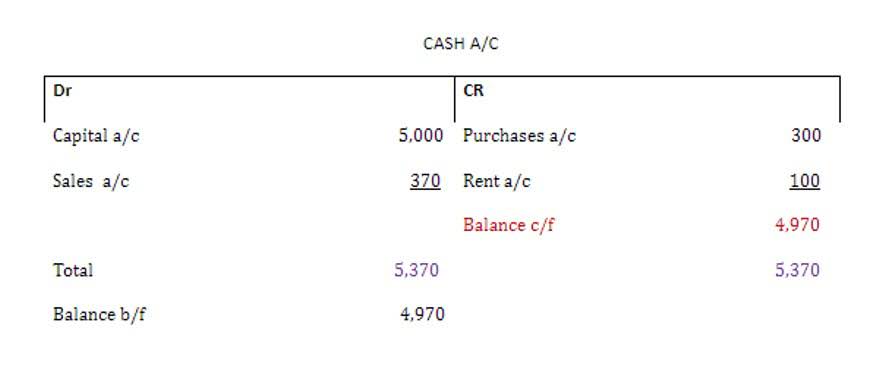Incremental Cost What Is It, Example, Formula

If a business is earning more incremental revenue (or marginal revenue) per product than the incremental cost of manufacturing or buying that product, then the business earns a profit. By comparing these incremental costs with the expected benefits (increased production, higher sales, etc.), the company can determine whether the expansion is financially viable. Analysis of the cost data shows that adding another 500 units will increase total cost to $530,000.

Days Payable Outstanding (DPO) Defined And How It’s Calculated
The reason why there’s a lower incremental cost Airbnb Accounting and Bookkeeping per unit is due to certain costs, such as fixed costs remaining constant. Productivity tracking and monitoring tools can provide valuable insights into production performance. Fluctuating customer demands, production bottlenecks, and workforce management issues can all impact the successful application of Production Pace.

STANDARD COST: Definition, Benefits, and Limitations
- Long-run incremental cost (LRIC) is a cost concept that forecasts expected changes in relevant costs over time.
- For example, if customers require 210 units per day, this number represents the customer demand.
- This refers to the wages paid to workers directly involved in the production process, such as machine operators, assemblers, or product packagers.
- By focusing on the changes brought about by a specific choice, managers can evaluate options objectively.
- Remember that context matters, and a holistic view of costs and benefits ensures better decision-making.
Whether you’re a manager, investor, or student, mastering this concept enhances your ability to navigate complex scenarios. Incremental cost helps isolate the production costs directly tied to upsizing capacity or volumes. It excludes fixed overhead costs that don’t fluctuate with short-term changes in output. This is an example to further appreciate the distinction between incremental cost and incremental revenue. Imagine you own a smartphone manufacturing company that expects to sell 20,000 devices. Each smartphone costs you $100 to produce, and your selling price each smartphone is $300.
- Production pace is a fundamental component of lean manufacturing principles.
- As a result, while both ideas are related to a cost shift, marginal cost relates to both a rise and a decrease in production.
- Incremental costs are the costs linked with the production of one extra unit, and it considers only those costs that tend to change with the outcomes of a particular decision.
- Always weigh incremental costs against potential benefits and align them with your goals.
- Through detailed reporting and performance analysis, businesses can pinpoint bottlenecks and implement corrective actions to maintain a smooth and efficient production pace.
What industries commonly use production pace in their processes?
- If managers calculate the incremental cost per unit, they might find it is $25 compared to an average cost of $40.
- By incorporating incremental cost analysis, the company can assess the additional expenses involved in increasing production and compare them with the expected increase in revenue.
- And the more units sold at marginal cost, the higher its contribution to the net income.
- Understanding how to calculate total incremental manufacturing cost is crucial for businesses to remain competitive in today’s market.
- Production pace is widely used in various industries, including automotive manufacturing, electronics production, aerospace, healthcare, and even service industries.
- Finally, incremental cost analysis can help businesses identify cost control measures that can reduce their overall costs.
The incremental cost was kept lower at $70,000 while producing twice its production capacity, leading to a higher net income. The first step in calculating the incremental cost is determining how many units you want to add to your normal production capacity. Incremental costs are additional expenses a business spends to expand production.
- Imagine an e-commerce platform adjusting ad spending based on incremental conversion rates.
- Various tools and technologies can assist in tracking and managing production pace.
- But then you are looking at making 5,000 more shirts as your labor, machinery, and production input tells you you can.
- By consistently meeting demand, companies can build stronger relationships with their customers and enhance their market reputation.
- By mastering incremental cost concepts, organizations can make informed choices that drive success.
- Beyond just balancing supply and demand, the Production Pace enhances overall workflow.
Why Calculate Incremental Costs?
Unlike fixed costs, which remain constant regardless of production levels, income summary incremental costs fluctuate with changes in production volume. This concept is critical when businesses assess the financial viability of producing additional units. From a financial perspective, incremental cost refers to the change in total cost resulting from a particular decision or activity. It helps businesses evaluate the additional expenses incurred or savings achieved by implementing a specific course of action. By comparing the incremental cost with the potential benefits or revenue generated, companies can determine the feasibility and profitability of their decisions.
Step 2: Determine the Total Cost at Base Volume
It covers important and significant costs that have a long-term impact on manufacturing costs and product pricing. They could include the price of crude oil, electricity, or any other key raw commodity, for example. The calculation of incremental cost shows how costs alter as production grows.

Incremental Cost: Definition, How To Calculate, And Examples
For instance, if it takes an average of 2.5 minutes to incremental cost produce one unit, this is the cycle time. It includes any delays or inefficiencies that occur during the production cycle. Cycle time, on the other hand, measures the actual time taken to complete one production cycle, from start to finish.

Dive into our blog at EmpMonitor, your go-to resource for all things related to workplace productivity. From streamlining workflows to boosting employee engagement, we cover it all. Stay updated with our latest articles and expert advice to take your productivity to new heights.
